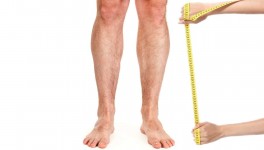Clinique Altermed
Montreal osteopathy
Perhaps you do, but perhaps you don’t.
Maybe you have a short leg or maybe it just appears that way. A certain percentage of patients who have repetitive back pain present with what appears to be a short leg. That is, when the person is lying flat on their back, we can visually inspect the leg lengths and determine that one leg is shorter than the other or perhaps when the patient it standing one hip is visibly higher than the other.
But is the leg really shorter, that is, anatomically shorter than it’s opposite? The answer to this question is not always simple. The definitive answer would come from a proper x-ray study but that avenue is not always a practical solution - it takes money, resources and time.
A Pragmatic Solution
This is how I usually deal with the issue in my practice. In the simplest of terms, a short leg can be either anatomical (physically shorter) or physiological (apparently short) caused by misalignments of joints, by shortened muscles etc. In the latter case, it may be possible to correct the problem by lengthening shortened muscles and realigning joints.
When a patient presents with lower back pain or neck pain and after taking a proper history and doing all the biomechanical testing, if a short leg is suspected, I usually recommend 2 to 4 treatments to see if we can correct the problem, if we can, then so much the better. If we cannot, we usually are able to reduce the severity of the problem because, even an anatomically shorter leg will over time exaggerate itself as muscle groups become shorter and as the adaptive response of the whole body continuously responds to the problem it usually makes the problem worse over time.
Then, after a course of treatments, if the remaining difference in leg length is minimal and the patient is symptom free, I generally leave it a that, preferring to adhere to the philosophy, “If it ain’t broke, then don’t fix it.” Or “Find it, fix it, then leave it alone.” In either case if the patient’s symptoms resolve and don’t come back, I would generally let things be. If they return and this is part of a longstanding history of repetitive chronic pain, then I would recommend orthotics to resolve the problem.
A Brief Warning About Orthotics
Take note that if your osteopath or other health care professional recommends getting an orthotic, it should be done in a professional manner. A reputable podiatrist will create two custom made orthotics for you (one for each foot) and never use something off the shelf. If for example, your left leg is 6mm shorter than the right leg, then the Podiatrist should correct for 3mm at first and give you a number of weeks to adapt to this change. If symptoms persist then another 1.5mm will be added. This process will go one until symptoms resolve. The final correction may not end up being a full 6mm but something less. A Podiatrist who proceeds in the above manner is working in a professional manner an in your best interest.
Eddy Basch, Osteopath D.O.



